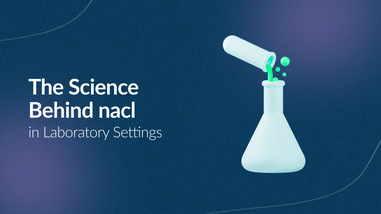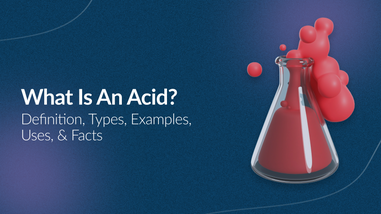- No products in the cart.
Hydrochloric acid, often abbreviated as HCl, is a potent chemical compound with a fascinating history and a wide array of applications in various industries. From its chemical properties to its reactions with different substances, including metals and bases, hydrochloric acid plays a crucial role in many aspects of our daily lives and industrial processes. In this blog, we will delve into the world of hydrochloric acid, exploring its properties and reactions that make it an indispensable chemical.
A Brief Introduction to Hydrochloric Acid
Hydrochloric acid is a colorless, highly corrosive solution of hydrogen chloride (HCl) dissolved in water. It is one of the simplest and most commonly used acids in chemistry. Its chemical formula, HCl, reflects its composition, consisting of one hydrogen atom (H) bonded to one chlorine atom (Cl). Despite its simplicity, the properties and reactions of hydrochloric acid are incredibly diverse and powerful.
The Properties of Hydrochloric Acid
Before we explore its reactions, let's take a closer look at the fundamental properties that define hydrochloric acid:
1. Acidity: Hydrochloric acid is an extremely strong acid. It dissociates in water to release hydrogen ions (H+) and chloride ions (Cl-). This high concentration of hydrogen ions makes it a potent acid and a valuable reagent in various chemical processes.
2. Corrosiveness: Due to its strong acidity, hydrochloric acid is highly corrosive to many substances, including metals, organic materials, and even some plastics. It is essential to handle it with care, using appropriate safety precautions.
3. Solubility: Hydrochloric acid is highly soluble in water, forming a clear and colorless solution. This solubility allows for easy mixing with other substances and makes it suitable for a wide range of applications.
4. Strong Reducing Agent: Hydrochloric acid can act as a reducing agent in certain reactions, where it donates electrons to other substances. This property is particularly important in various industrial processes and chemical reactions.
5. Fumes: When concentrated hydrochloric acid is exposed to air, it produces white, pungent fumes of hydrogen chloride gas. These fumes are highly irritating to the eyes and respiratory system, emphasizing the need for proper ventilation when working with this acid.

Reactions of Hydrochloric Acid
Now that we've explored its properties, let's delve into the fascinating world of hydrochloric acid's reactions with different substances, showcasing its versatility and importance in various fields:
1. Reaction with Metals: Hydrochloric acid reacts vigorously with many metals to form metal chloride salts and hydrogen gas. This reaction is highly exothermic and serves as a common method for generating hydrogen gas in laboratories and industrial applications. For example, the reaction of hydrochloric acid with zinc (Zn) is represented as follows:
- HCl + Zn → ZnCl2 + H2
This reaction demonstrates the acid's ability to dissolve metals and generate hydrogen gas, which has various applications, from hydrogen fuel production to metal cleaning and etching.
2. Neutralization with Bases: Hydrochloric acid can neutralize bases, resulting in the formation of salt and water. This neutralization reaction is essential in various chemical processes and laboratory experiments to adjust pH levels. When hydrochloric acid reacts with sodium hydroxide (NaOH), it forms sodium chloride (table salt) and water:
- HCl + NaOH → NaCl + H2O
This reaction showcases how hydrochloric acid can be used to control acidity or alkalinity in solutions.
3. Reaction with Carbonates: Hydrochloric acid reacts with carbonates to produce carbon dioxide gas, water, and the corresponding chloride salt. This reaction is commonly observed when hydrochloric acid is used to clean and remove scale or deposits from surfaces. For instance, when hydrochloric acid reacts with calcium carbonate (CaCO3), it results in the formation of calcium chloride (CaCl2), carbon dioxide (CO2), and water:
- 2 HCl + CaCO3 → CaCl2 + CO2 + H2O
The release of carbon dioxide gas is often used as an indicator of this reaction.
4. Precipitation Reactions: Hydrochloric acid is frequently used to confirm the presence of certain ions in solution through precipitation reactions. When added to a solution containing specific metal cations, hydrochloric acid can cause the formation of insoluble metal chloride salts. These precipitates can be identified through their characteristic colors and used for qualitative analysis in chemistry.
5. Redox Reactions: In addition to its acidic properties, hydrochloric acid can participate in redox (reduction-oxidation) reactions. For example, it can act as a reducing agent when reacting with substances like potassium permanganate (KMnO4), reducing it to manganese dioxide (MnO2) while itself being oxidized:
- 8 HCl + 2 KMnO4 → 2 MnO2 + 2 KCl + 5 Cl2 + 4 H2O
This redox capability is valuable in chemical synthesis and industrial processes.
Applications of Hydrochloric Acid
Hydrochloric acid's properties and reactions find applications in various industries and fields:
1. Chemical Industry: Hydrochloric acid is a fundamental reagent in the production of various chemicals, including chlorine, sodium chloride, and many pharmaceuticals.
2. Metallurgy: It is used for pickling and cleaning metals, removing rust and scale from surfaces.
3. Food Industry: Hydrochloric acid plays a role in food production, particularly in processes involving pH adjustment and mineral extraction.
4. Oil Refining: In the oil and gas industry, hydrochloric acid is used to clean and maintain wells.
5. Laboratory: It serves as a versatile reagent in chemical laboratories for various experiments and analyses.
6. Water Treatment: Hydrochloric acid is employed to adjust pH levels in water treatment processes, ensuring safe and clean drinking water.
Safety Precautions
When working with hydrochloric acid, it is crucial to prioritize safety:
-
Proper Ventilation: Work in a well-ventilated area or under a fume hood to avoid inhaling noxious fumes.
-
Protective Gear: Wear appropriate personal protective equipment, including gloves, safety goggles, and lab coats.
-
Dilution: Always add acid to water, not the other way around, to avoid splattering.
-
Emergency Equipment: Have access to emergency eyewash stations and safety showers.
Conclusion
In conclusion, hydrochloric acid's properties and reactions make it a versatile and indispensable chemical in various industries. From its corrosive nature to its role in neutralization and redox reactions, this acid has shaped the world of chemistry and industry in profound ways. Understanding its chemistry and safe handling is essential for harnessing its power and ensuring its responsible use in diverse applications.
For over 40 years, Lab Pro Inc. has been committed to delivering highest quality lab chemicals, lab supplies, hand tools, lab equipment, reagents, distance learning kits, and cleanroom PPE apparel. Renowned by global medical device companies and laboratories, we ensure exceptional quality in every product. Contact us online or call 888-452-2776 to learn more. Discover top-notch lab supplies and elevate your experiments today!












































